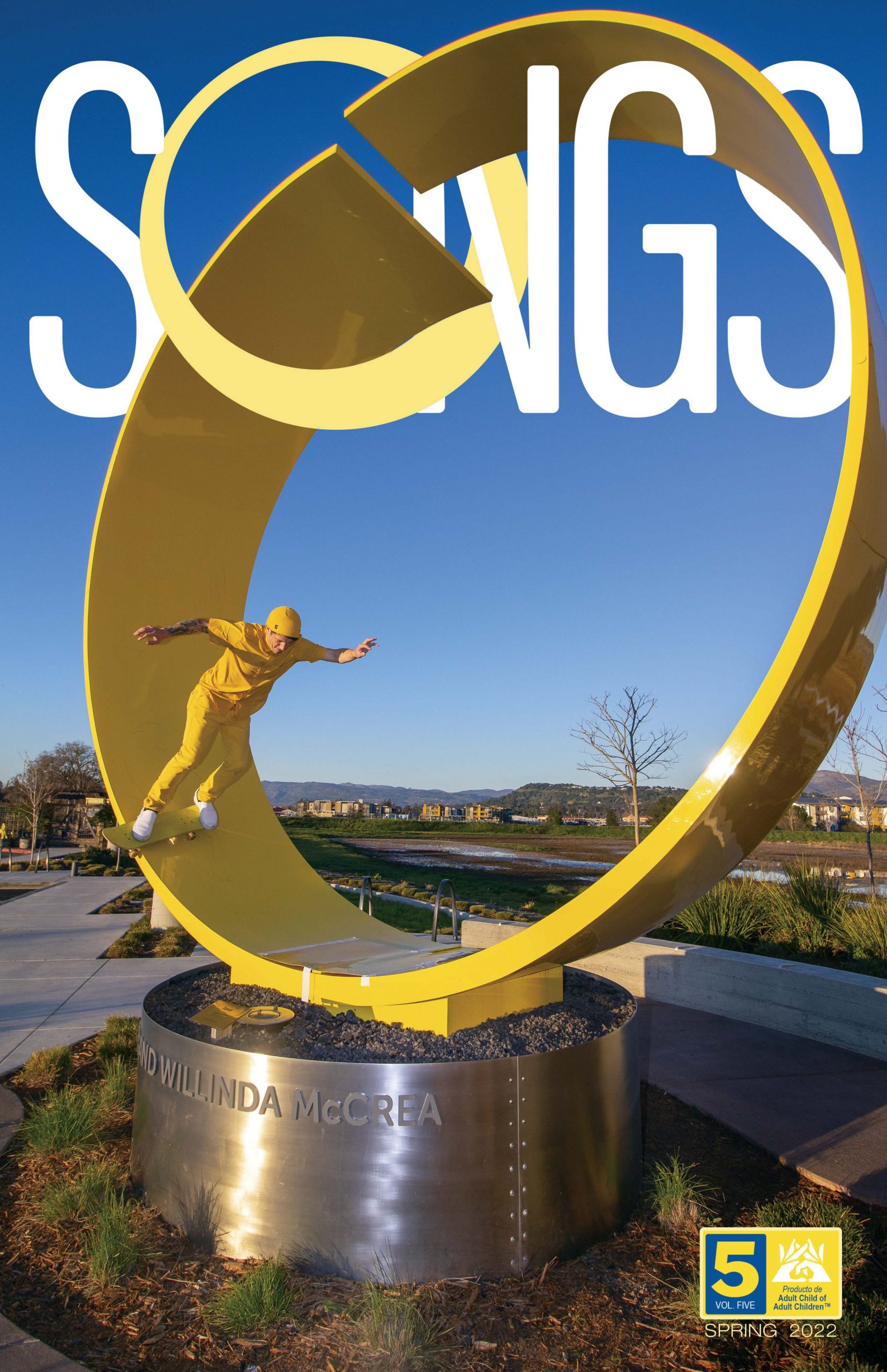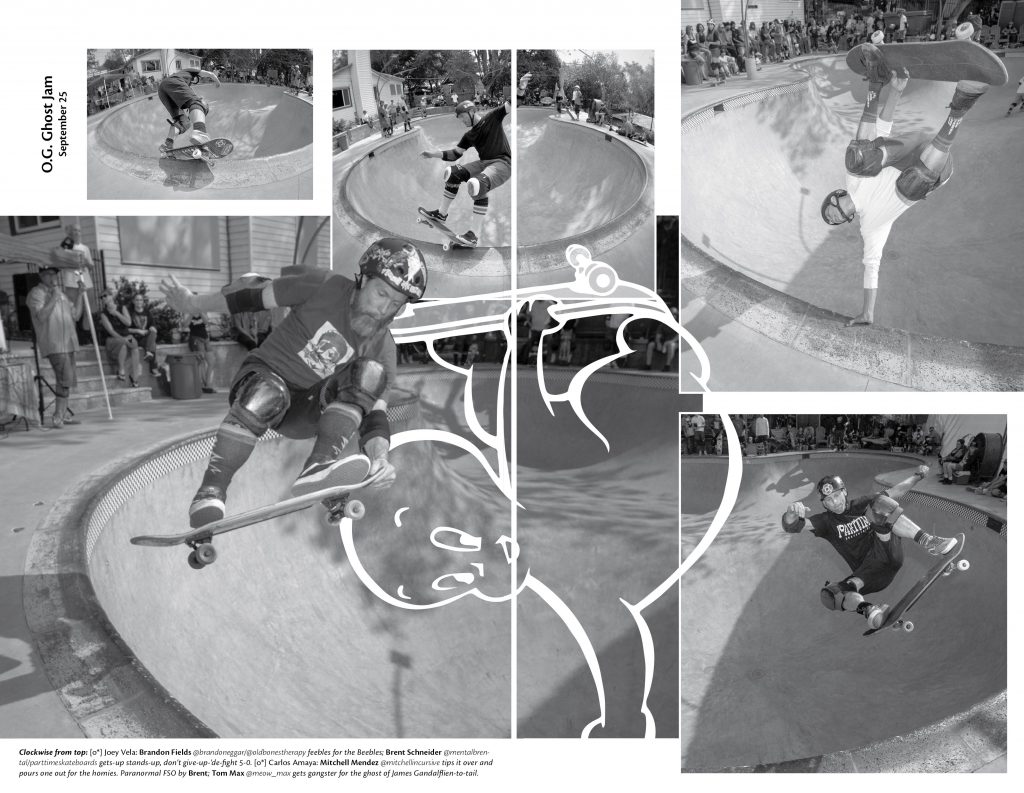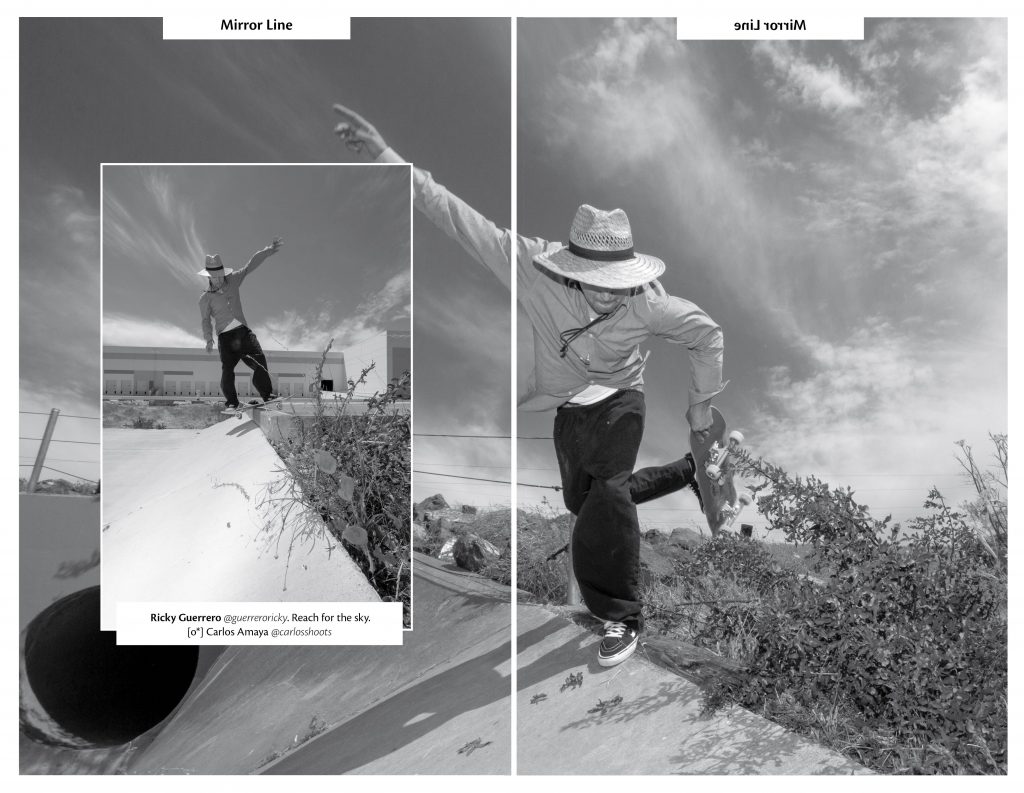Hey Aaron! Thanks for sitting down for a quick interview. Can you tell us why you started making Songs, the skateboarding magazine?
Well, just generally speaking, skating and design are pretty interrelated for me.
The backstory isn’t all that different than what seems like every male designer my age: I started skating in ‘88, and it was my interest in that — the graphics, photos, all of it — is what pushed me towards design at all.
Magazines and comics were my lifeline growing up in the middle of nowhere. I think that, and years in the punk scene … that led to zine- and book-making. Once I got my first Mac, that’s how I taught myself to design, really. Just always having an outlet and a project to work on. That faded out too … I dont think I had done anything since maybe 2015?
Anyway, so: fall 2018, I start skating a lot again. With that … the injuries come way quicker and hang around longer than they did 20+ years ago. I’ll find myself driving 90+ minutes to some skatepark and being wrecked within the hour. So I resurrected my 2007-era DSLR and began shooting photos before I’d head home.
After touring some parks in northwest Oregon the summer of 2020 with that same friend and his daughter, I collected the photos from that trip as the jumping off point for the first issue of Songs. Just as a one-off.
Now five 5 issues in, I’m hoping Songs can provide an outlet for Northern California skateboarders, skateboard photographers, and artists underserved by the lack of mass market alternatives.
Is this part of your creative practice now?
To be perfectly honest, I’ve been pretty burned out and not doing much creatively the past five years. I don’t feel like I have a practice anymore. Now that my professional life has been cordoned off exclusively into front-end development, UX, and accessibility for the web, I knew needed to find something to scratch that itch. I’ve tried a bunch of things the last few years… wood working, laser cutting, painting and drawing, prop building … crossstitch!
A print magazine is a great, or at least easy, outlet for the type of work I know and love: experimentation with layouts, illustration, and a return to occasionally writing again.
Photography also helped resuscitate my creative practice as it gave me an option not tied to a desk, which is the last place I want to be most of the time. It’s also getting me talking to folks again, especially good after a few years of Covid. It’s been really helpful in so many ways.
What historical skate zine sources are you looking at? How have they influenced how you create these publications?
I’ve always been a bit of a print hoarder. I miss Tower Books and Cody’s so much.
I still have some early 2-color SLAPs, Poweredge, and Big Brother mags and World Industries catalogs from the 90s, along with newer, non-skate, but long-gone stuff like Punk Planet, Arkitip, Tokion and Anthem. I wish I had more 80s stuff like Tod Swank’s zines, the Wrench Pilot comics Andy Jenkins does, and Skate Fate. I’m into a lot of the high-brow skate authors out there … Kyle Beachy’s non-fiction narrative book Most Fun Thing was great … I’ve read the Emily Yochim’s feminist critique and am about to start Skateboarding & The City, Ian Borden’s architectural/civic go-to.
I try to follow, re-post, and buy as many current mags and zines as I can. Most of the best stuff is from Europe — Vague and Free leap to mind … Secret Curb Club and Serious Adoolt. Skateism is another one that addresses deeper cultural issues in the world alongside the action. The Vent City podcast is good like that too.
I’m inspired that legendary skate photographer Jaime Owens has started another full-size glossy this year, Closer, and it’s really beautiful and interesting. I’m pretty over the interview format, but this mag spins it in a way that feels different. Highly recommended, even for non-skaters. Best US stuff right now is 86’d out of Long Beach and Stoops out in NC.
As far as influences, Big Brother (print precursor to the Jackass movies) used to be a big one but thankfully think I have it out of my system. If I had to pick, I’d say Henry Owing’s Chunklet editorially, and Sandro Grison’s (an ‘00s Canadian skate mag) Color aesthetically. I got into ‘60s counterculture newspapers and old Dada stuff for a minute. I don’t really see a direct influence on Songs, but it’s in there.
In the digital landscape what value do you believe a zine like this has?
Local media is actually becoming more important. The past 10-15 years have seen the skateboard media space drop to only one major U.S. print publication (Thrasher) and they actually make a good portion of their income via YouTube and hoodies, not the magazine. There’s a whole lot that can be done in the vacuum. Not commercially, but there’s room to exist for a reason.
Digital is so vapid and fleeting … it has speed and volume, but the value of its contents is almost zero. Most ‘writing’ has been demoted to captions and headlines, clapbacks, and emojis. The really “good” stuff? The highly-reposted media? It becomes almost an annoyance, before it just disappears. I especially resent the substitution of the word “content” for creative output of all kinds. It’s like that final insult to injury headed towards the commodification of everything.
There’s obviously utility in digital. All of my contributors come from social media connections. The @songs.zine Instagram following has quadrupled over the first half of 2022, which has led to press runs doubling, getting some ad money, help distributing. I archive a digital copy on Issue.
Ultimately it’s a matter of a print-first philosophy. Some of the pictured skaters get so hyped because it actually means something. Print’s “downsides” of rarity, expense, and limited reach lend legitimacy to their photos. You’re not one in a trillion online, you’re one of, like, 15, once every three to six months. Someone took the time to select, design with, print, and pay to produce “you.” What social media has proven is that we all search for a feeling of special acknowledgement, and print provides that in all the ways social can’t.
You talk about getting older and not being to skate for as long or as well. Can you “Age Out” of Skating?
Well, I don’t think we really know yet. The activity is so young —modern skateboarding wasn’t born until like 1975. There are guys that turned pro in like 1981 that are still skating at a pretty high level into their late 50s. Plus, now there’s so many little sub-genres, pretty much any skill level or body type can do it; it’s not all handrails. It’s such an individual activity. There’s no coach or league telling you you have to stop. Now, your body definitely talks to you. Mine screams at me daily.
I guess what I’m trying understand is where are the boundaries of skate culture? Or are there things you see as pillars to it similar to Hip Hop and is zine culture/publication one of them?
I guess an analogy to zines would be those mixtapes/CD-Rs a rapper might be slinging at the gas station, or cold-mailing to radio stations?
The main thing is plain old participation. When I started, the culture was only really into accepting people … men … who were good. Now, just being there, trying, that’s enough to be a skater. As we get more open to differences in gender, sexuality, age, it’s breaking down this weird bubble that forgot it’s something done for fun. Being good is just the receipt.





